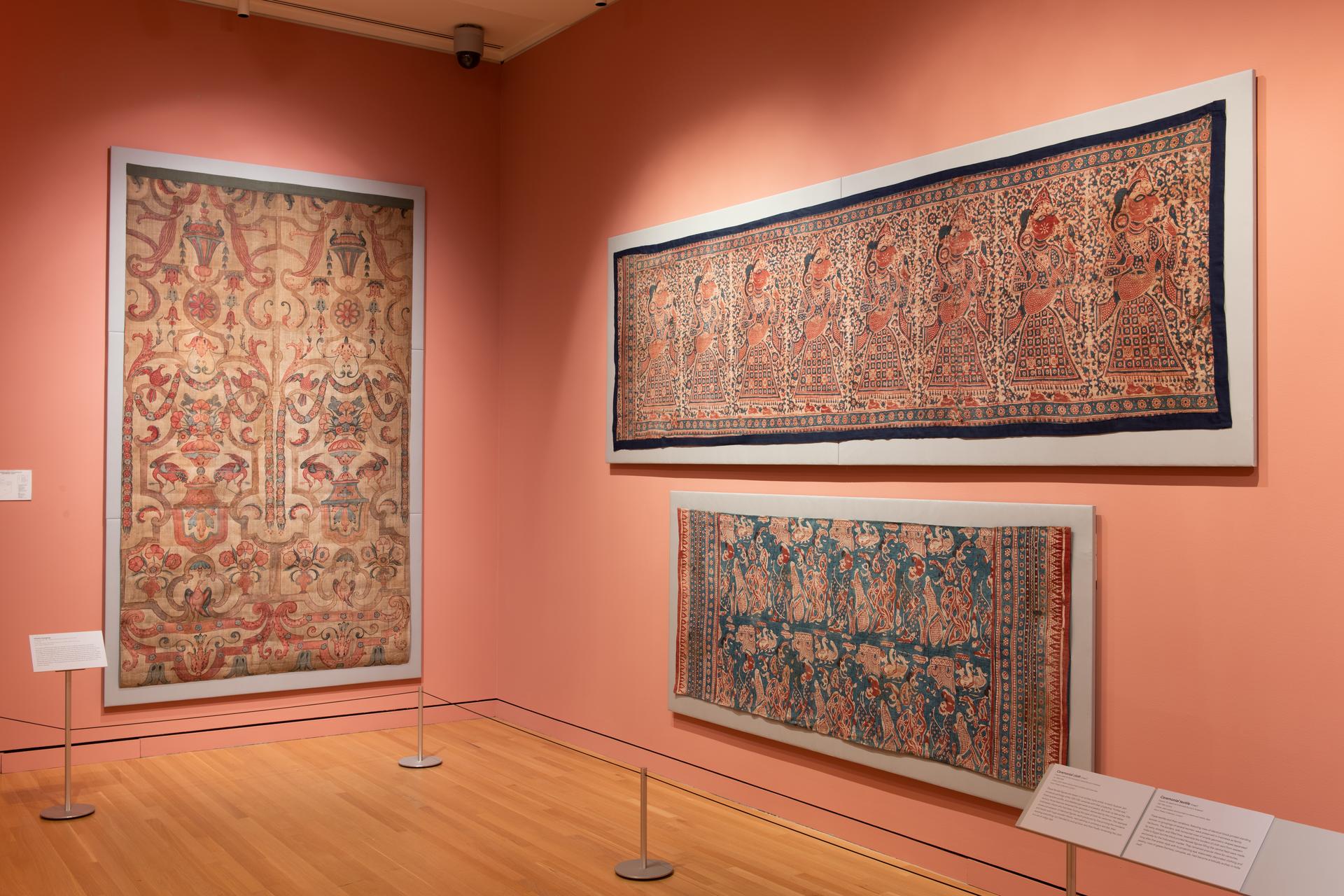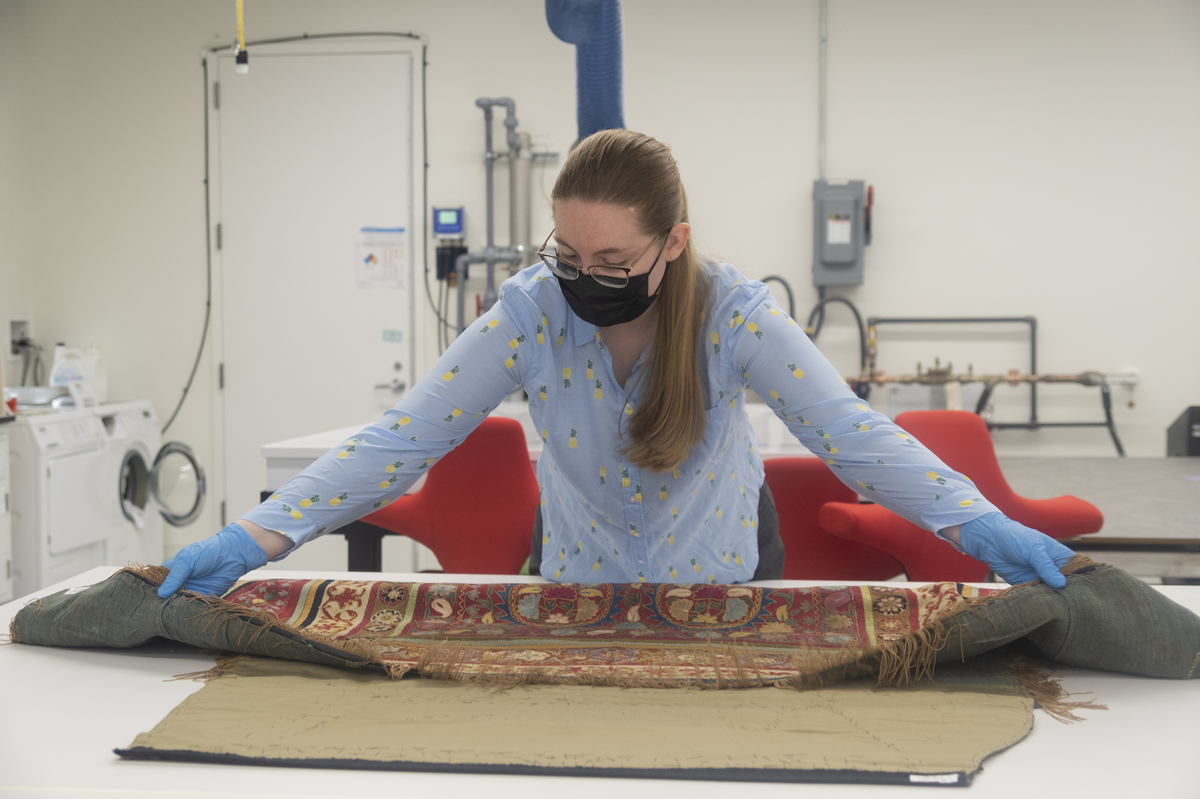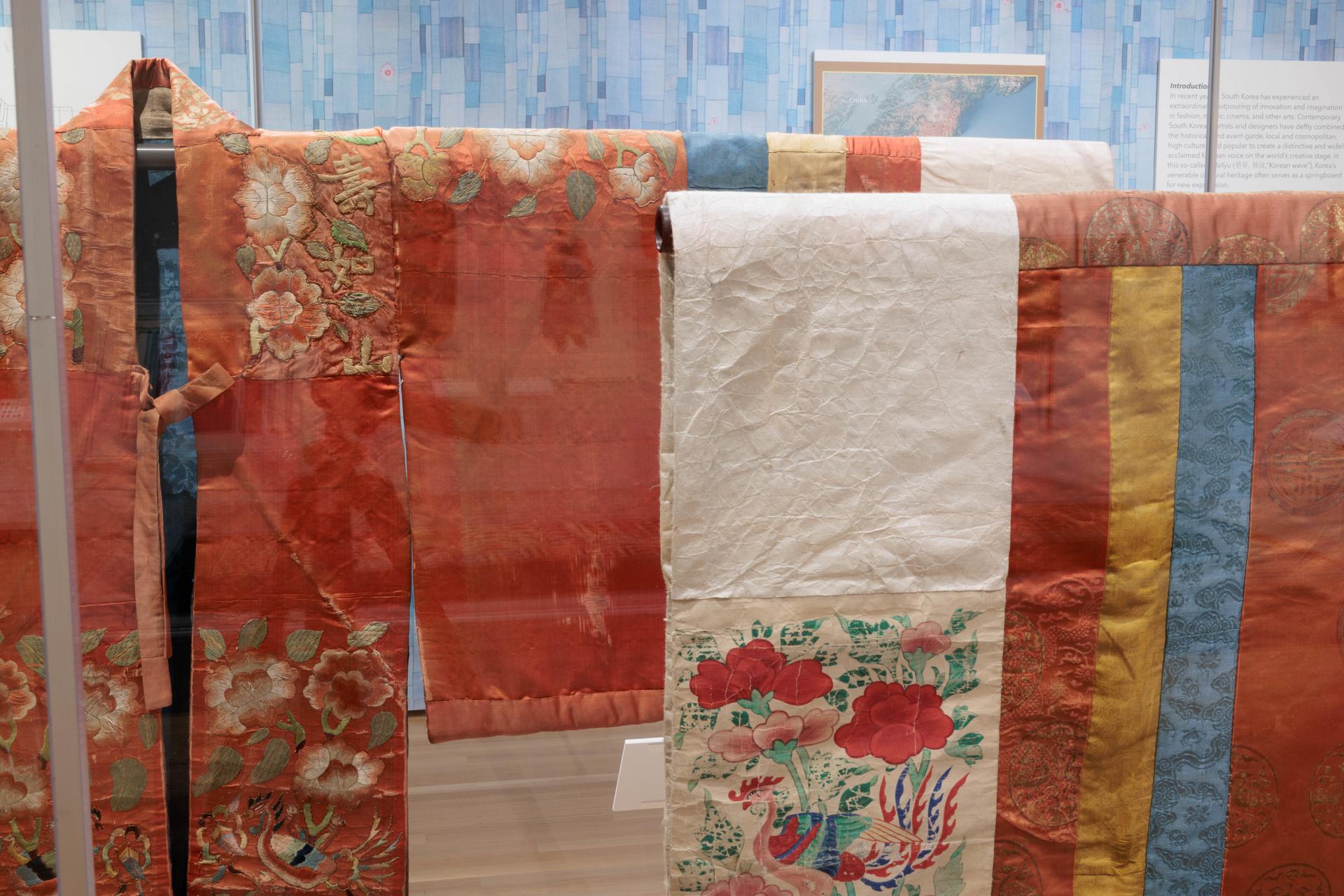On a wall in the George Washington University Museum and The Textile Museum’s new exhibition hangs a shimmering green textile bordered in gold, seemingly too vibrant to be more than a few years old. But the inventory stamp on the corner of the piece, a man’s waistcloth from Western India, reveals the truth: it was catalogued as part of a wealthy owner’s collection in the early 1700s and is probably even older.
The waistcloth’s extraordinary conservation is testament not only to the value its owner placed on it, but also to the quality of its materials (the gold border features the real thing, wrapped around silk thread) and the craftsmanship of the artisans who wove it. It’s just one of many such pieces in the museum’s latest exhibition, “Indian Textiles: 1,000 Years of Art and Design,” which brings together pieces created across the Indian subcontinent by various communities from the eighth to the early 20th century. To systematize such a broad span of time and technique, the textiles are organized in three groups by style of ornamentation: abstract, floral and figurative patterns.
“For thousands of years, India has been one of the world’s most creative and prolific centers of textile production,” said Lee Talbot, curator of The Textile Museum Collection. “India’s abundant natural resources in textile fibers and dyes, combined with millennia of human ingenuity, have created an astonishing array of fine fabrics. All of these textiles originally fulfilled practical functions as clothing or as furnishings and represent many of the major techniques that were traditionally used in India, for example tie dye, ikat, embroidery and of course really fine weaving.”
"Indian Textiles: 1,000 Years of Art and Design" on display from The George Washington University on Vimeo.
The 92 works on display are drawn both from the museum’s own collections and from the private collection of Karun Thakar, a renowned collector of Indian textiles based in London. Many are on public view for the first time. Although the museum has an extensive collection of textiles and fragments from the Indian subcontinent, this is its first large-scale exhibition of Indian textiles since 1982.
India’s renown as an exporter of fine fabrics made it a hub of international trade, and many of the pieces on display were created for the Dutch, French or other European markets. Floral patterns were particularly well-adapted to the global market; after removing his powdered wig in the evening, for instance, a fashionable man in 18th-century Europe might don an embroidered cap from Bengal to wear at home.
Figurative textiles—which include depictions of humans, deities, real or imaginary animals and objects—often served a religious purpose, whether on the subcontinent or elsewhere. Pieces on display include a 15th-century narrative banner from Gujarat with figures central to the Jain religion; a hanging depicting the incarnations of Vishnu; a shrine cloth from Uttar Pradesh honoring Muslim warrior-saint Sayyid Salar Mas’ud; and an embroidered altar cloth of the Virgin Mary.
Similar textiles could be created for different audiences and at different price points. On the exhibition’s largest wall display, an ikat-dyed diamond-pattern hanging in rich red is replicated as a more cost- and labor-efficient block print—still handmade, but a little more accessible.
“In the 20th century we did see a decline in some of this hand production,” Talbot said. But as consumers and manufacturers have become more aware of the costs of industrial fast fashion, interest in those techniques has revived. “We’ve started to see designers in India and around the world looking to traditional techniques, fibers and materials, incorporating those into everyday fabrics. Of course, these traditional techniques can be very expensive to make by hand so they're not always within reach of everyone.”
One of Talbot’s favorite pieces in the exhibition is a fragment of a long narrative banner on the second floor. Its upper portion depicts a market scene where a street conjurer surrounded by baskets and balls performs “the kinds of tricks that you might see someone performing on the streets of a large city today,” Talbot said.
Most surviving narrative banners tell well-known stories of gods and folk heroes, but the story here is unknown, seeming to show “ordinary people going about their daily life,” Talbot said. “What I find fascinating about it is that it's just this one moment in time that must have been repeated hundreds of times daily across India, captured forever in this textile.”
“Indian Textiles: 1,000 Years of Art and Design” is on view through June 4 at The George Washington University Museum and The Textile Museum. For more information about the exhibition, related programming and museum hours, visit museum.gwu.edu.




